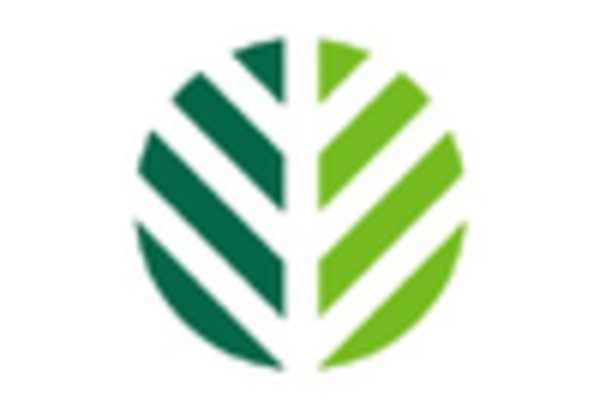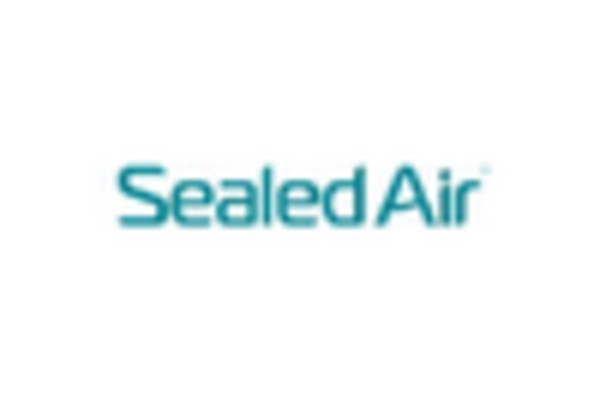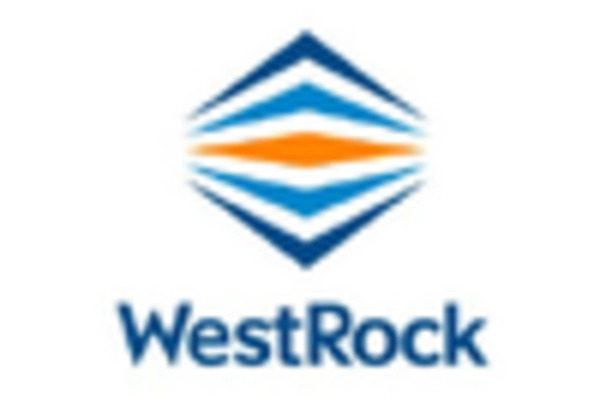The Vintage Packaging Market is currently characterized by a dynamic competitive landscape, driven by a confluence of sustainability initiatives, consumer preferences for retro aesthetics, and technological advancements. Key players such as Amcor (AU), Mondi Group (GB), and WestRock (US) are strategically positioned to leverage these trends. Amcor (AU) focuses on innovation in sustainable materials, aiming to reduce environmental impact while enhancing product appeal. Mondi Group (GB) emphasizes regional expansion and partnerships to bolster its market presence, particularly in Europe, where demand for vintage packaging is surging. WestRock (US) is investing in digital transformation to streamline operations and improve customer engagement, thereby enhancing its competitive edge. Collectively, these strategies indicate a shift towards a more integrated and sustainability-focused market environment.
In terms of business tactics, companies are increasingly localizing manufacturing to reduce lead times and optimize supply chains. This approach not only enhances responsiveness to market demands but also aligns with sustainability goals by minimizing transportation emissions. The Vintage Packaging Market appears moderately fragmented, with several key players exerting influence while also facing competition from smaller, niche companies that cater to specific consumer segments. The collective actions of these major players shape a competitive structure that encourages innovation and responsiveness.
In August 2025, Amcor (AU) announced a partnership with a leading sustainable materials provider to develop a new line of biodegradable vintage packaging solutions. This strategic move is likely to enhance Amcor's product offerings and align with growing consumer demand for environmentally friendly packaging options. By integrating sustainable materials into its vintage packaging line, Amcor positions itself as a leader in the market, potentially attracting eco-conscious consumers and retailers alike.
In September 2025, Mondi Group (GB) launched a new vintage-inspired packaging design aimed at the premium food sector. This initiative not only showcases Mondi's commitment to innovation but also reflects an understanding of consumer trends favoring nostalgic aesthetics. By tapping into the premium segment, Mondi could significantly enhance its market share and brand loyalty among consumers seeking unique packaging solutions that resonate with their values.
In July 2025, WestRock (US) unveiled a digital platform designed to facilitate customer interaction and streamline the ordering process for vintage packaging products. This digital transformation initiative is indicative of WestRock's strategy to enhance customer experience and operational efficiency. By leveraging technology, WestRock may improve its competitive positioning, making it easier for customers to access and customize vintage packaging solutions.
As of October 2025, the Vintage Packaging Market is witnessing trends such as increased digitalization, a heightened focus on sustainability, and the integration of artificial intelligence in design processes. Strategic alliances among key players are shaping the competitive landscape, fostering innovation and collaboration. Looking ahead, it appears that competitive differentiation will increasingly hinge on innovation, technological advancements, and supply chain reliability, rather than solely on price. This shift suggests a more sophisticated market where companies that prioritize these elements may gain a substantial advantage.


















Leave a Comment